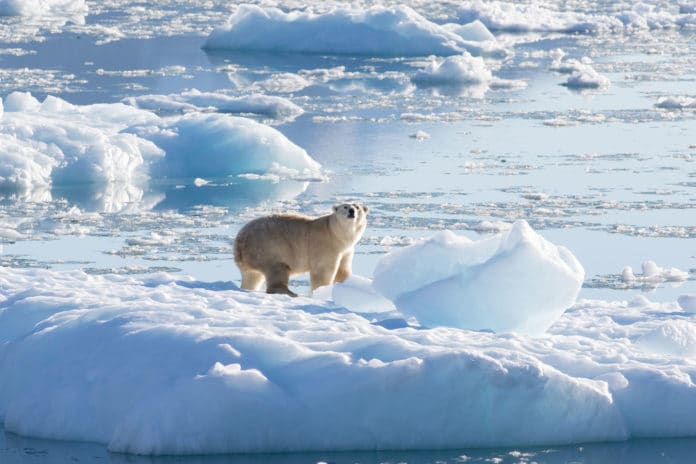Sea ice provides a hunting platform for polar bears all around the Arctic. Polar bears are rushing to find ice to hunt on as the world heats due to human-caused climate change and Arctic sea ice disappears.
But a new study reported the discovery of an isolated population of polar bears from southeastern Greenland that is much less reliant on sea ice. Scientists found that Greenland’s fjords harbor a unique group of polar bears that rely on glacial ice. These bears mainly rely on ice melanges, a mix of sea ice and pieces of glacial ice that are carved off of marine-terminating glaciers.
An international team of scientists from the University of Washington and the National Snow Ice and Data Center (NSIDC) spent seven years tracking bears in Southeast Greenland. They combined their findings with genetic analysis and three decades of historical data from Greenland’s entire east coast. They also employed NASA’s Terra and Aqua satellites’ Moderate Resolution Imagine Spectroradiometer instruments (MODIS) and NSIDC data to document the fjord and offshore sea ice environment.
They found that the Southeast Greenland bears are cut off from sea ice for two-thirds of the year, thus, they rely on freshwater ice slabs that break off from the Greenland Ice Sheet and coastal glaciers to augment their hunting. Bears also trek between fjords by crossing inland ice and climbing mountains.
Co-author Kristin Laidre, a polar scientist at the University of Washington, said, “We knew there were some bears in the area from historical records and Indigenous knowledge. We didn’t know how special they were.”
This small, genetically different group of polar bears employs techniques that may aid the species’ survival in a warming world. However, the scientists warn that glacier ice can’t provide enough habitat for many bears because relatively few places drop large quantities of glacier ice into the ocean. Polar bear numbers will likely decrease in most of the Arctic, where they rely solely on sea ice.
Co-author and NSIDC Deputy Lead Scientist Twila Moon said, “We view these cross-collaborations as vital for addressing many pressing research challenges related to our rapidly changing world.”
Journal Reference:
- Kristin L. Laidre, Megan A. Supple et al. Glacial ice supports a distinct and undocumented polar bear subpopulation persisting in late 21st-century sea-ice conditions. DOI: 10.1126/science.abk2793
